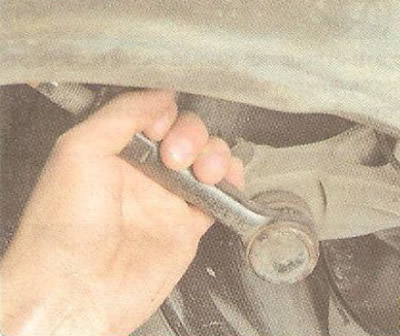When inspecting the steering, pay special attention to the condition of the protective covers and threaded connections. Be sure to replace torn, cracked or lost elasticity rubber boots, otherwise water, dust and dirt that get into the nodes will quickly disable them.
The car is equipped with a hydraulic booster. Check the condition of the hoses and pipelines connecting the pump, reservoir and steering gear.
Check the location of the steering wheel spokes, which, with the front wheels in a straight position, should be located symmetrically about the vertical axis. Otherwise, determine the cause of the malfunction and eliminate it.
Turning the steering wheel from lock to lock, check visually and aurally:
- reliability of fastening of the steering mechanism and steering wheel;
- lack of clearance in the steering rod bushings and ball joints of the steering rod ends;
- reliability of tightening and locking of nuts of fingers of ball joints;
- lack of jamming and interference preventing the steering wheel from turning.
If you find knocking and sticking, disconnect the tie rods from the steering knuckles and recheck. If knocking and sticking do not stop, remove the steering gear from the vehicle and have it repaired at a specialized workshop.

1. Check up a condition of protective covers of tips of steering draughts. Replace torn, cracked or loose covers.
2. Sharply turning the steering wheel in both directions (this should be done by an assistant), check visually and aurally the mounting of the steering mechanism. Movement of the mechanism and knocks are not allowed.

3. Check up presence of backlashes in spherical hinges of tips of steering draughts. Tips, the hinges of which have a noticeable play, replace. Check up also reliability of an inhaling of nuts of fingers of spherical hinges of tips of steering draughts.

4. Check up a condition of protective covers of steering draughts. Be sure to replace damaged covers.
